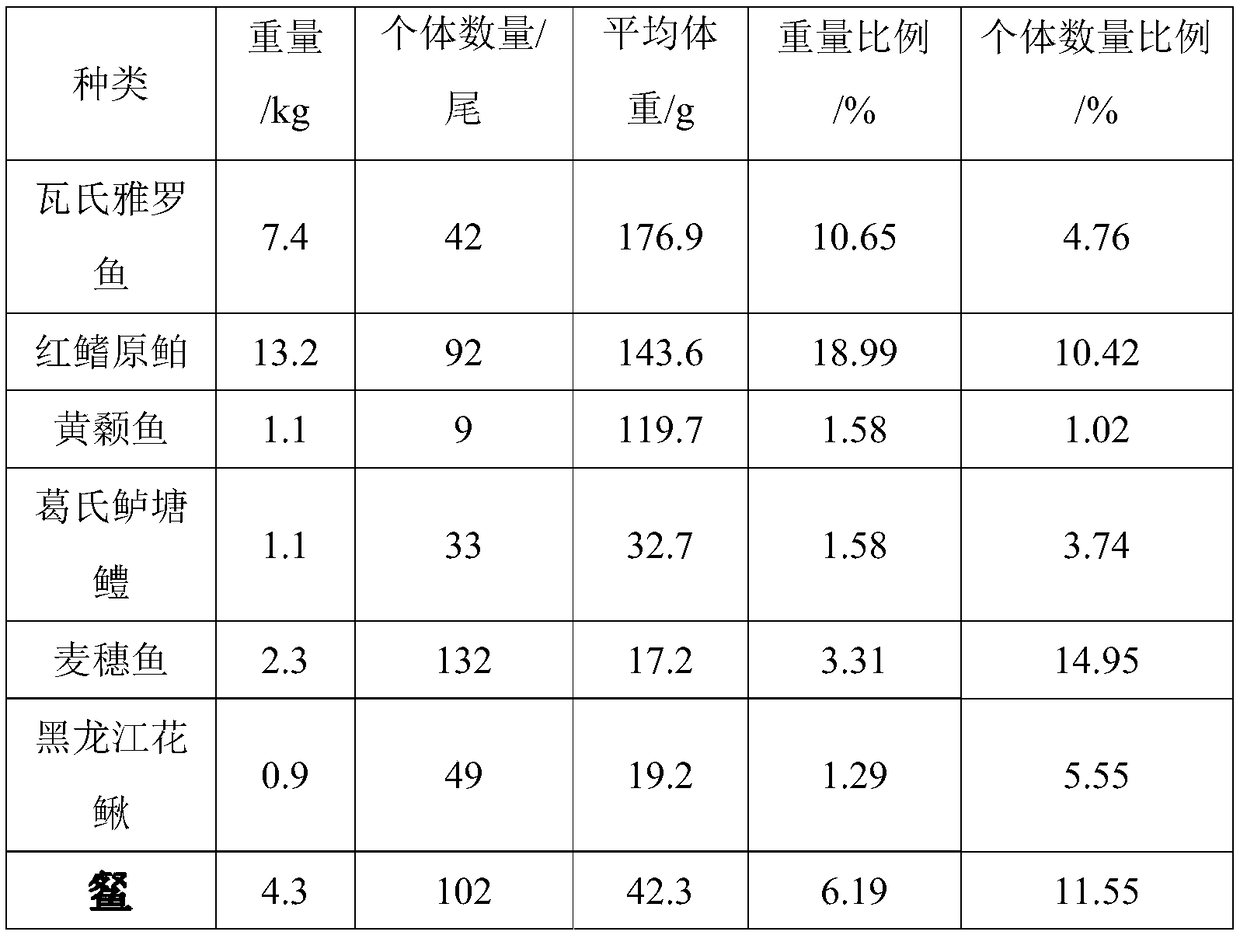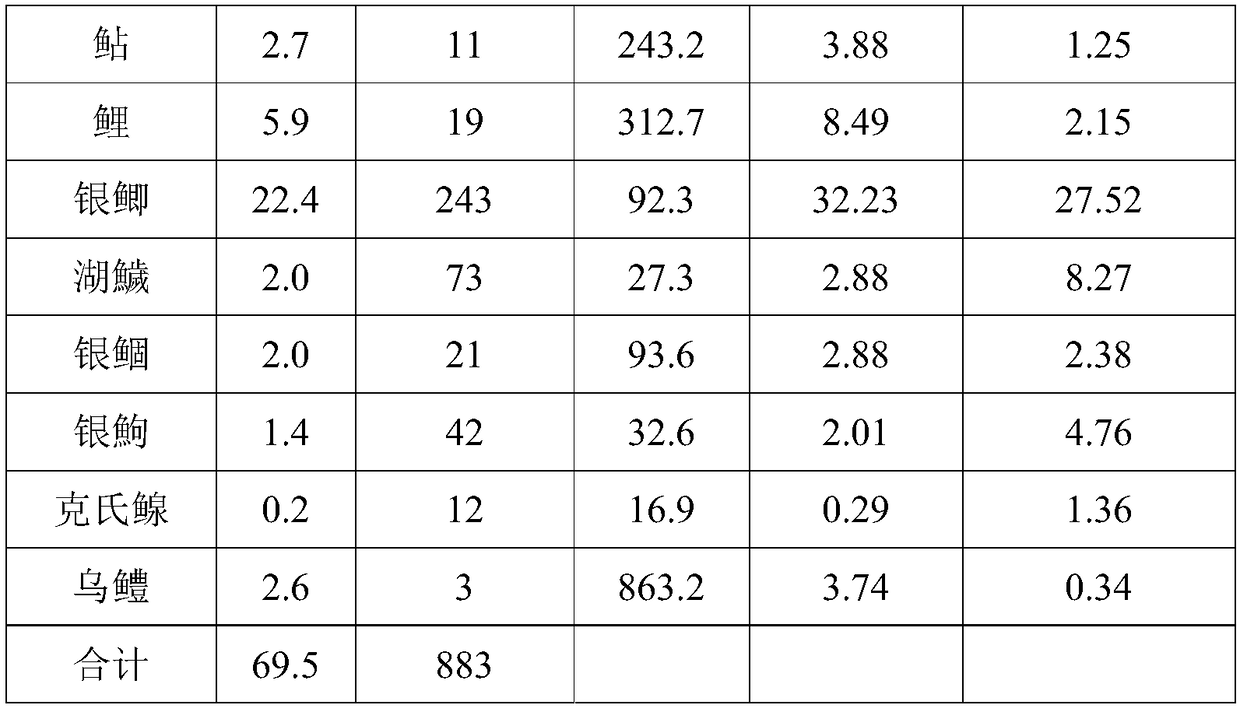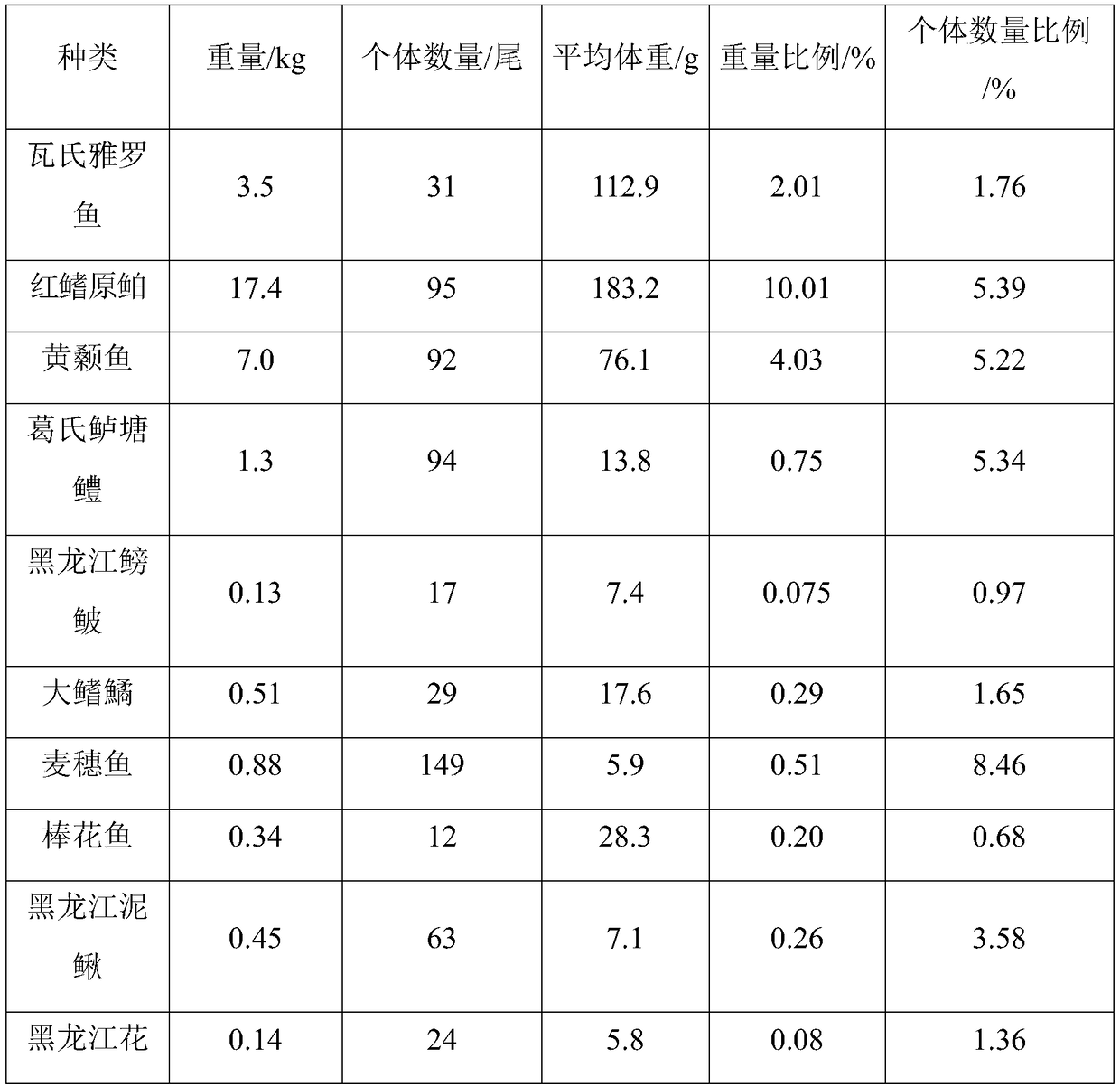Degenerated marsh wetland fish habitat restoration method
A wetland and swamp technology, applied in the field of degraded swamp wetland habitat restoration, can solve problems such as reducing the ecological function of migratory birds transiting and resting places, and achieve the effect of ecological function restoration
- Summary
- Abstract
- Description
- Claims
- Application Information
AI Technical Summary
Problems solved by technology
Method used
Image
Examples
specific Embodiment approach 1
[0019] Specific implementation mode 1: This implementation mode is a method for restoration of fish habitat in a degraded swamp wetland, specifically carried out according to the following steps:
[0020] 1. Habitat space suitability restoration:
[0021] ①. Enlarging the living space of fish: digging down the silt in the natural water area connected with the river in the marsh wetland to increase the water storage capacity; The water depth in the post-marsh wetland is 0.7m~0.75m;
[0022] ②. Create a wintering habitat for fish: dig down at the end of the natural water accumulation zone connected to the river in the marsh wetland near the river inlet to meet the fish's safe wintering requirements, and create a wintering area;
[0023] Said meeting the fish safety overwintering requirements is to dig down to the water depth under the ice surface in winter is 1.3m ~ 1.4m;
[0024] The area of the wintering area is 0.4% to 0.45% of the submerged area of the marsh during the...
specific Embodiment approach 2
[0029] Specific embodiment 2: The difference between this embodiment and specific embodiment 1 is that the natural water accumulation zone described in step ① is a channel, a river or a dish-shaped depression. Others are the same as the first embodiment.
specific Embodiment approach 3
[0030] Embodiment 3: The difference between this embodiment and Embodiment 1 or 2 is that in Step 1 ①, the natural water accumulation zone connected to the river in the marsh wetland is dug down until the summer flood subsides and the water depth is 0.75m. Others are the same as those in Embodiment 1 or 2.
PUM
 Login to View More
Login to View More Abstract
Description
Claims
Application Information
 Login to View More
Login to View More - R&D
- Intellectual Property
- Life Sciences
- Materials
- Tech Scout
- Unparalleled Data Quality
- Higher Quality Content
- 60% Fewer Hallucinations
Browse by: Latest US Patents, China's latest patents, Technical Efficacy Thesaurus, Application Domain, Technology Topic, Popular Technical Reports.
© 2025 PatSnap. All rights reserved.Legal|Privacy policy|Modern Slavery Act Transparency Statement|Sitemap|About US| Contact US: help@patsnap.com



